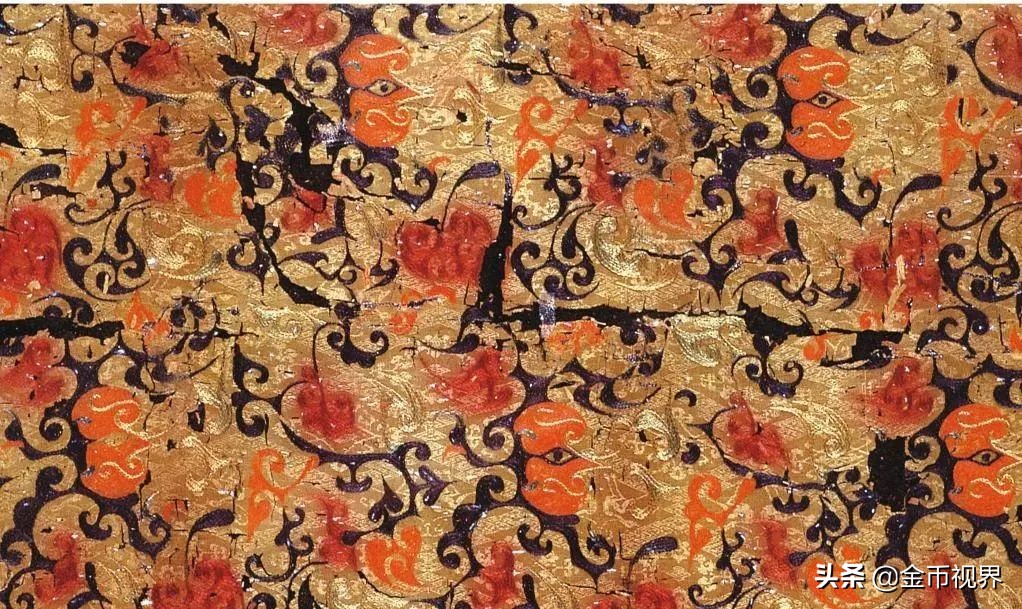Recently, the Hunan Provincial Museum for the first time on the Mawangdui Han tomb unearthed unstructured textiles to systematically clear the warehouse, in this clearance work, for the first time found that the Mawangdui Han tomb unearthed diamond pattern qi there are woven words, but also found a new pattern of silk fabric phoenix bird pattern, etc., to fill the research gap in related fields.

Yellow-brown pair of bird diamond patterns excavated from the Mawangdui Han Tomb "embroidery by cloud"
(Image source People's Network official micro, courtesy of Hunan Provincial Museum)
Excavated from 1972 to 1974, the Mawangdui Han Tomb is the tomb of the three families of the Western Han Dynasty Changsha State Minister and The Yuanhou Licang family, and more than 3,000 precious cultural relics have been unearthed, including more than 700 exquisite lacquerware with intricate craftsmanship, more than 500 pieces of finely woven silk clothing, etc., which is one of the world's major archaeological discoveries in the 20th century. The exquisitely woven silk garments unearthed from the Mawangdui Han Tomb prove the record of the "Silk Country" (Seres) in Western literature.
The legend of the "Silk Country"
According to the "Records of the Western Regions of the Tang Dynasty", Zhang Qian went out to the Western Regions and brought the rainbow-like silk of the Central Plains there, and the princes, nobles, and commoners were envious. They also want to learn the techniques of silkworm cultivation.
Chinese Silk Road Gold and Silver Commemorative Coins (Group 1)
1/3 ounce gold coin (Zhang Qian's mission to the Western Regions)
However, the Court of the Great Han Dynasty had a ban that silkworm seeds could not be passed on, and violators were punished with capital punishment.
Ancient Chinese Scientific and Technological Inventions Discovery Gold, Silver and Platinum Commemorative Coins (Group 3)
1/2 ounce gold coin (silk)
In order to obtain silkworm seeds, the king of Khotan (tián) in the Western Regions sent envoys to the Han Dynasty to ask for relatives, and specifically told the princess: "There has never been a silkworm seed in the mainland, please bring silkworm seeds when the princess comes, so that you can wear beautiful silk clothes." After the princess heard this, when she was married, she hid the secretly prepared silkworm seeds in hats that border guards did not dare to search, and brought them to Khotan (tián). This is the legend of Princess Chuansi.
Chinese Silk Road Gold and Silver Commemorative Coins (Group 1)
22 g silver coin (silk reeling)
In the first century BC, in distant Egypt there was a very beautiful queen named Cleopatra, who was later called Cleopatra.
Solomon Islands 2022 - Cleopatra Commemorative Coin
She likes to wear a light, transparent Sidon roza that is rare in the Mediterranean. Julius Caesar also began to use expensive silk under her influence. At that time, the price of silk once reached 12 gold pounds, but it still could not stop the nobles' thirst for silk. And the source of these silks is seres – the silk country, that is, China.
Chinese Silk Road Gold and Silver Commemorative Coins (Group 1)
22 g Silver Coins (Trading Chart)
See national treasure
The Hunan Provincial Museum has a Warring States period painting excavated in 1973 from Tomb No. 1 of the Bullet Depot in Changsha, the Figure Royal Dragon Painting. In the center of the picture is a man wearing a high crown, a robe, and a long sword at his waist. He stood on his side on the body of a dragon with a canopy on the top of his head; the dragon had its head and tail held high, and its bow was formed into a boat, and a carp was accompanied by a carp. The picture is simple and mysterious, the characters are vivid and vivid, and the lines of the costumes are smooth and stretched, which is known as an outstanding representative of early Chinese portraiture.
In 1998 Chinese Bank issued a set of dragon cultural gold and silver commemorative coins, in which the back pattern of the 1/10 ounce gold coin was based on this figure royal dragon painting.
Special tips
Regarding textile clothing, there is also a famous painting - "Pounding Diagram". According to the issuance plan, Chinese Bank will issue a series of ancient Chinese famous paintings (pounding pictures) gold and silver commemorative coins in August this year, and open the series of ancient Chinese famous paintings again after 20 years, which is worth looking forward to!